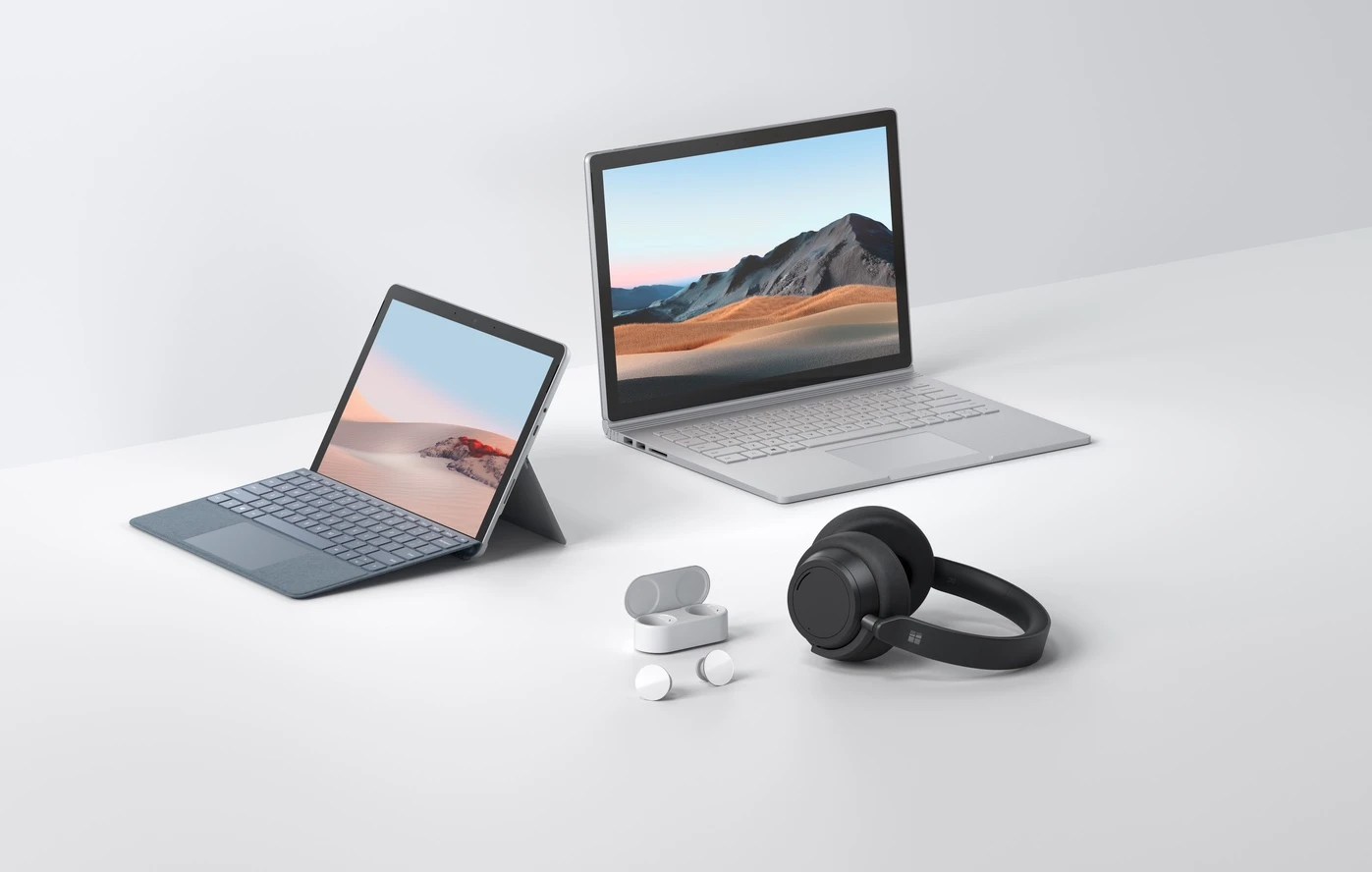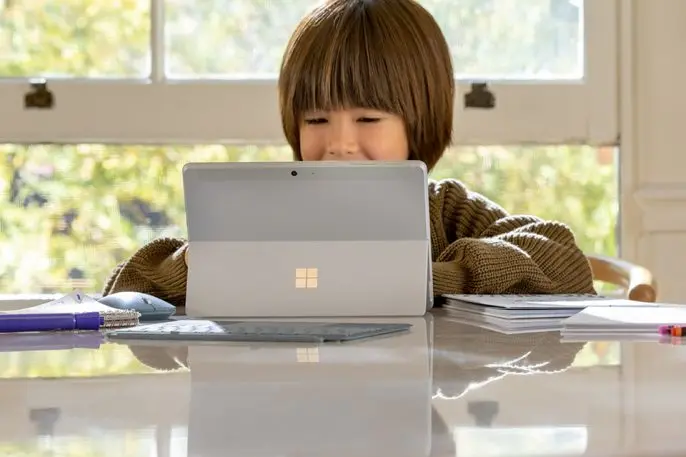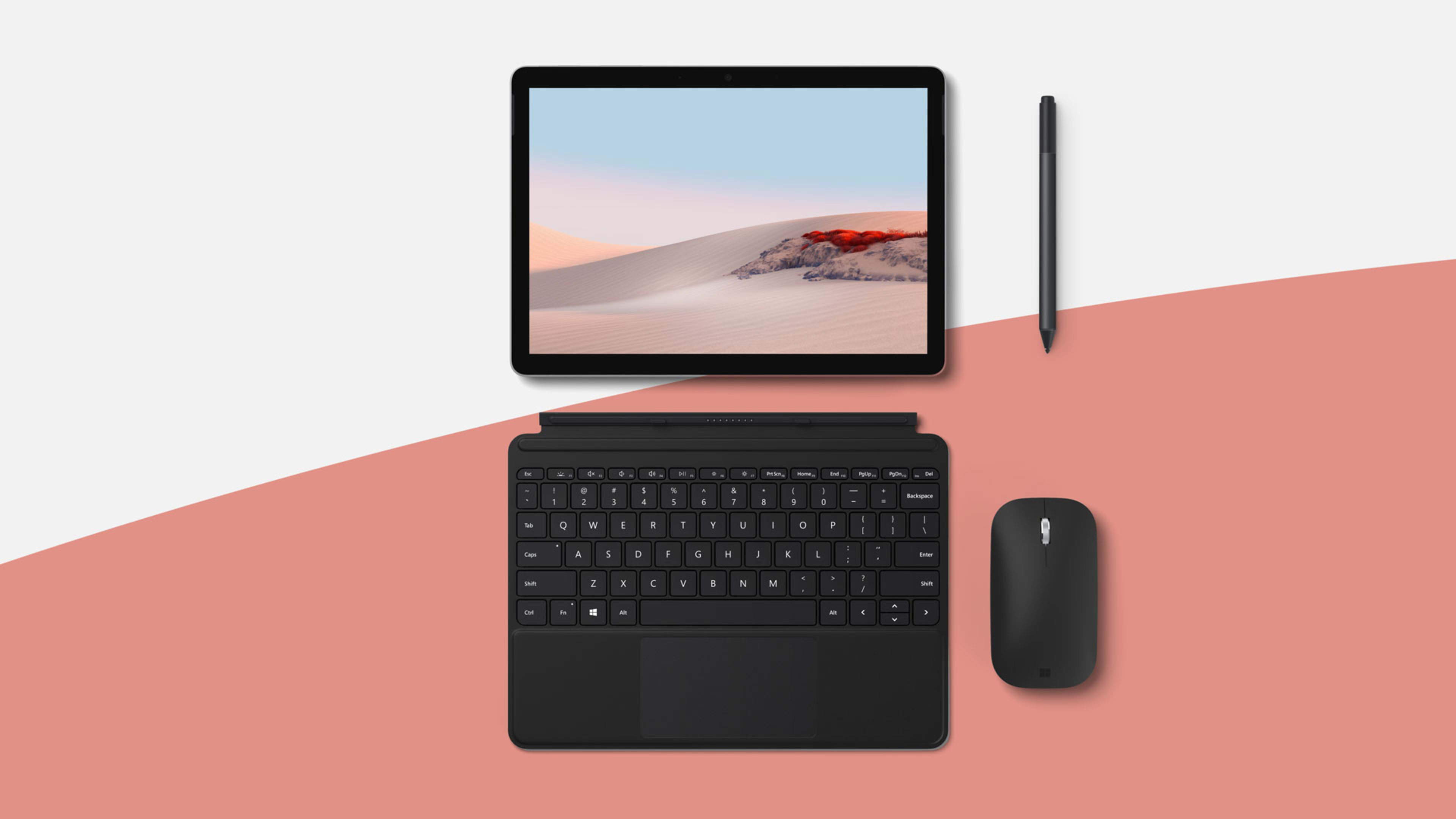Last October, Microsoft held a splashy hardware event in New York City at which it unveiled the Surface Neo and Surface Duo, two two-screen mobile devices that it doesn’t plan to ship until the fall of this year. It’s rare for any company to switch on its hoopla machine so far in advance, but the Neo and Duo both aspire to push the boundaries of portable computing, making them a big deal for Microsoft—and, at least potentially, the whole industry.
Now the company is announcing several other new Surface products, all of which are due to arrive this month. With a pandemic in progress, they’re getting a subdued rollout rather than the blitz that the Neo and Duo, along with the Surface Pro 7 and Surface Pro X, got in October. But that’s in line with the nature of this gear, which includes updates to existing devices and accessories, plus a product that was announced at October’s event, then delayed.
They include:
- A new version of the Surface Go, the smallish, cheapish Windows 10 tablet that’s roughly analogous to Apple’s base-model iPad and iPad Air. The Surface Go 2 has a 10.5″ display (up from 10″), a faster Intel processor, and dual microphones for better audio quality in applications such as video calling. It continues to start at $399 and offer a keyboard and Surface Pen stylus as optional equipment.
- The Surface Book 3, an update to Microsoft’s most potent portable, a laptop with a screen that detaches for tablet-style use. The Surface Book is aimed at high-end users such as content creators and coders, and the improvements are all about performance: new Intel processors and Nvidia GPUs, faster solid-state storage, and up to 32GB of RAM. The new version is available in 13″ and 15″ variants and starts at $1,599.
- The $249 Surface Headphones 2 have better sound quality and longer battery life than the first version, according to Microsoft, with 13 levels of ambient noise control.
- Announced at that year’s event and originally due by the end of 2019, the Surface Earbuds are AirPods competitors that offer integration with Microsoft apps such as Word and PowerPoint as well as Spotify. Initially announced at $249—more than AirPods Pro—they will instead go for $199.
- The $260 Surface Dock 2 is an updated version of a gadget for hooking up a Surface to a display, ethernet, and USB devices. (There’s also a new, non-Surface $100 Microsoft USB-C Travel Hub for mobile use with any USB-C-equipped device.)

For instance, the present period of closed workplaces and schools has led to people leaning more on the versatility of their personal computing devices and appreciating high-quality front-facing cameras and audio systems. Barlow says that the total usage of Windows 10 is up 35% since February—”a pretty amazing trend” that might be a sign that people who are suddenly working from home spend more quality time with their computers than those who are out, about, and staring at their phones.

With people far more likely to buy new gadgets sight unseen over the internet rather than after checking them out in a store, Microsoft is offering a 60-day money-back guarantee on its new products. “It’s just hard to get your hands on physical devices these days, and we want to make what we’re calling the Microsoft promise available to all customers,” says Barlow. By the time the Surface Neo and Surface Duo show up, with any luck, the times might be—if not pleasantly mundane—at least slightly more optimal for the release of new computing devices.
Recognize your brand’s excellence by applying to this year’s Brands That Matter Awards before the early-rate deadline, May 3.
